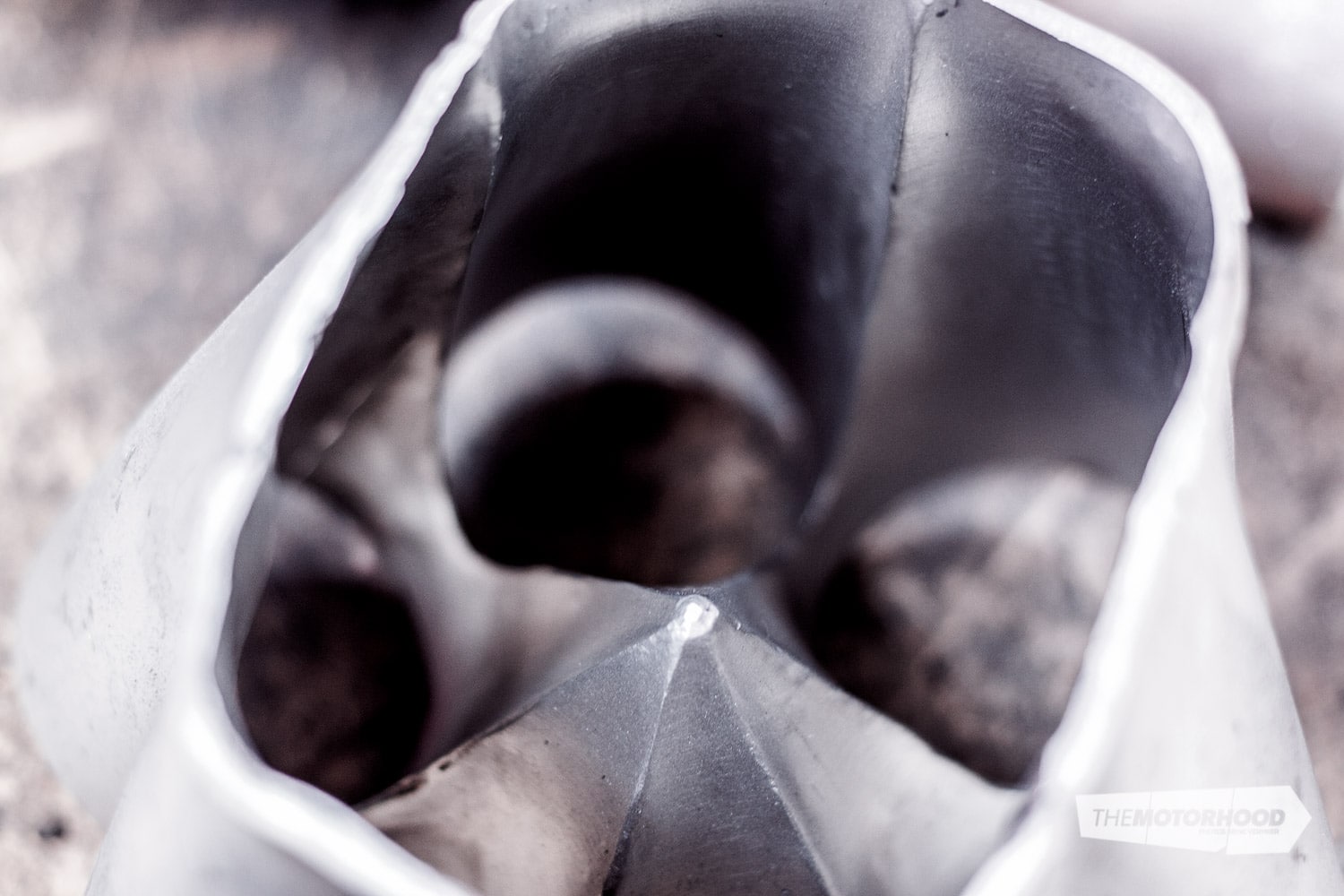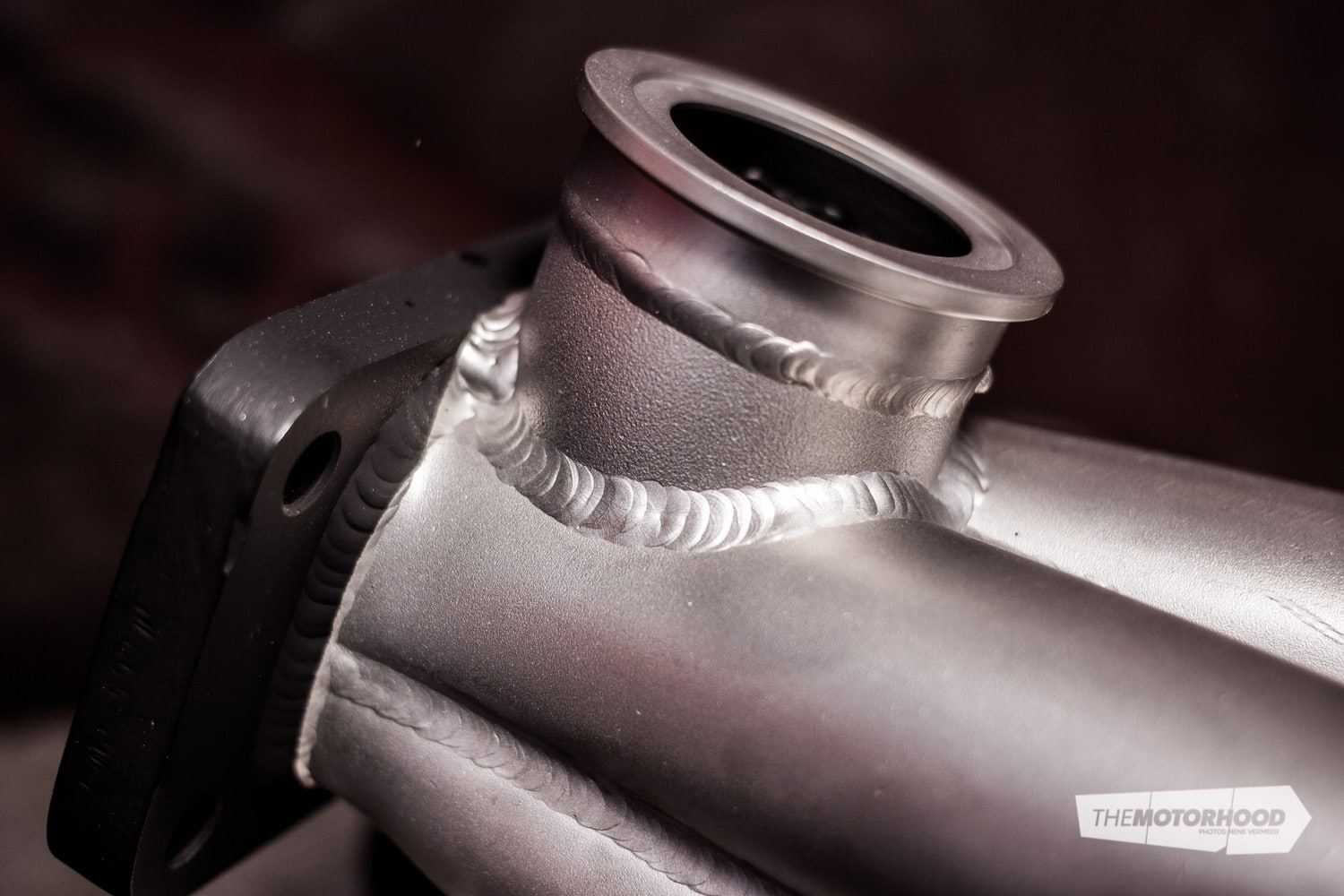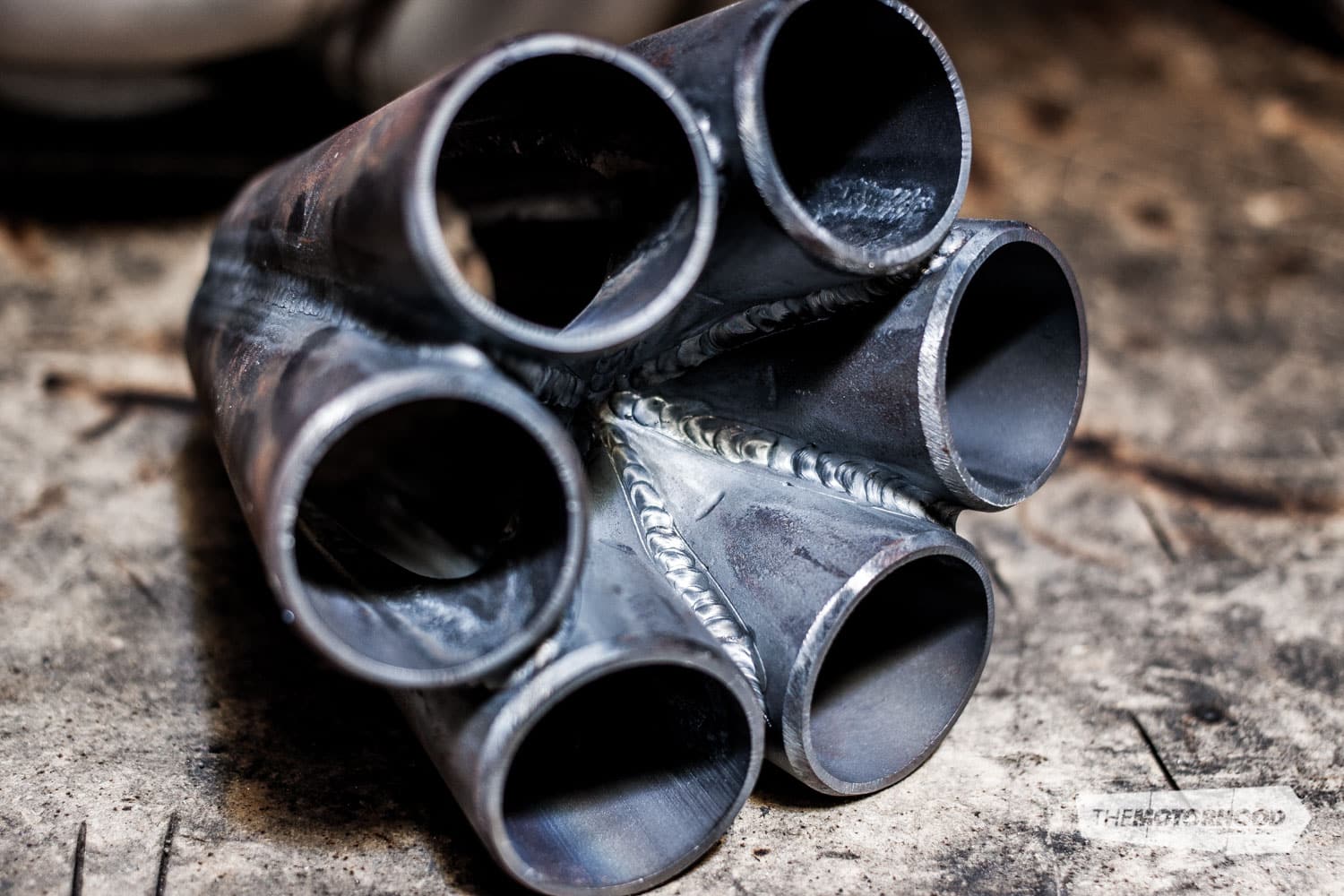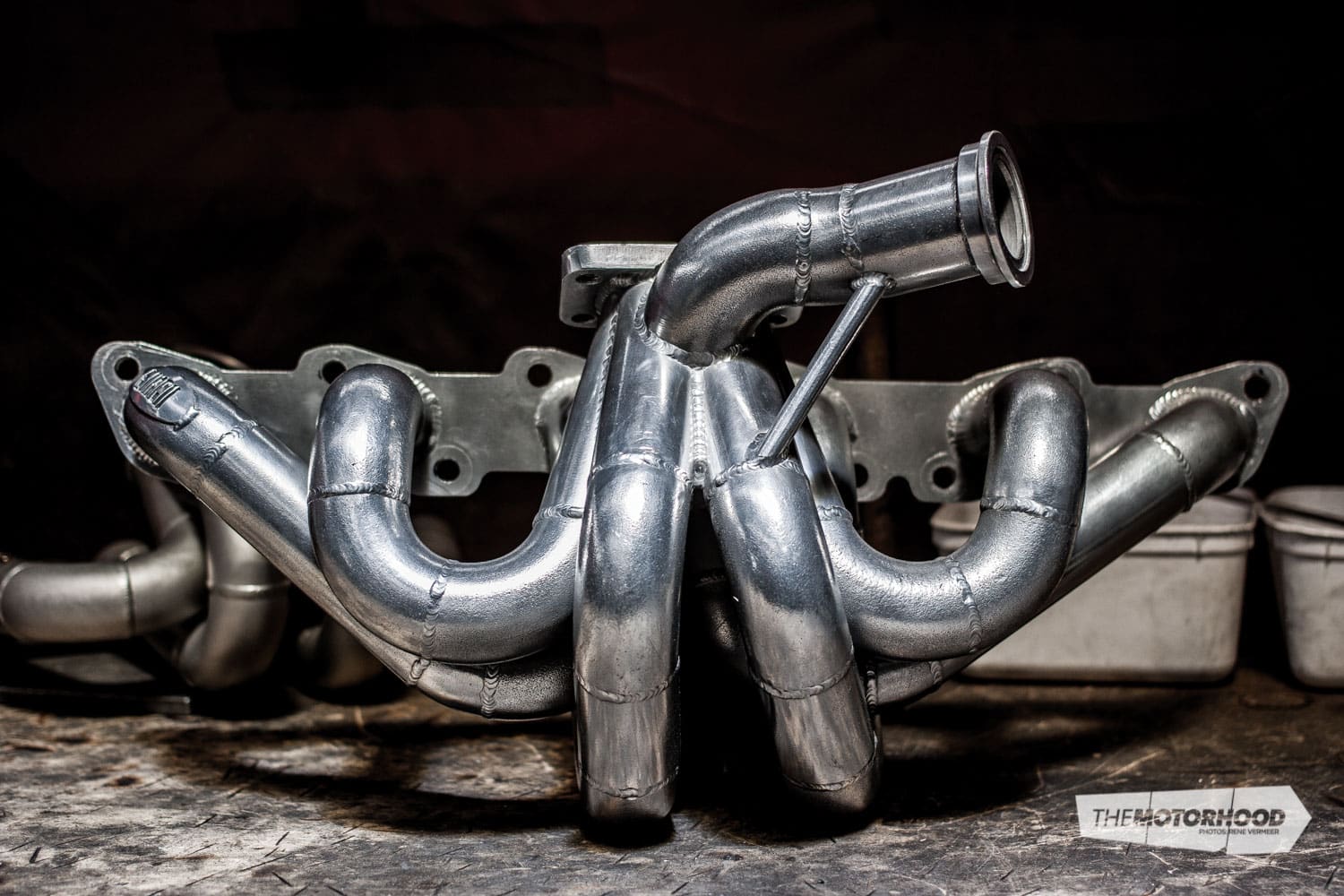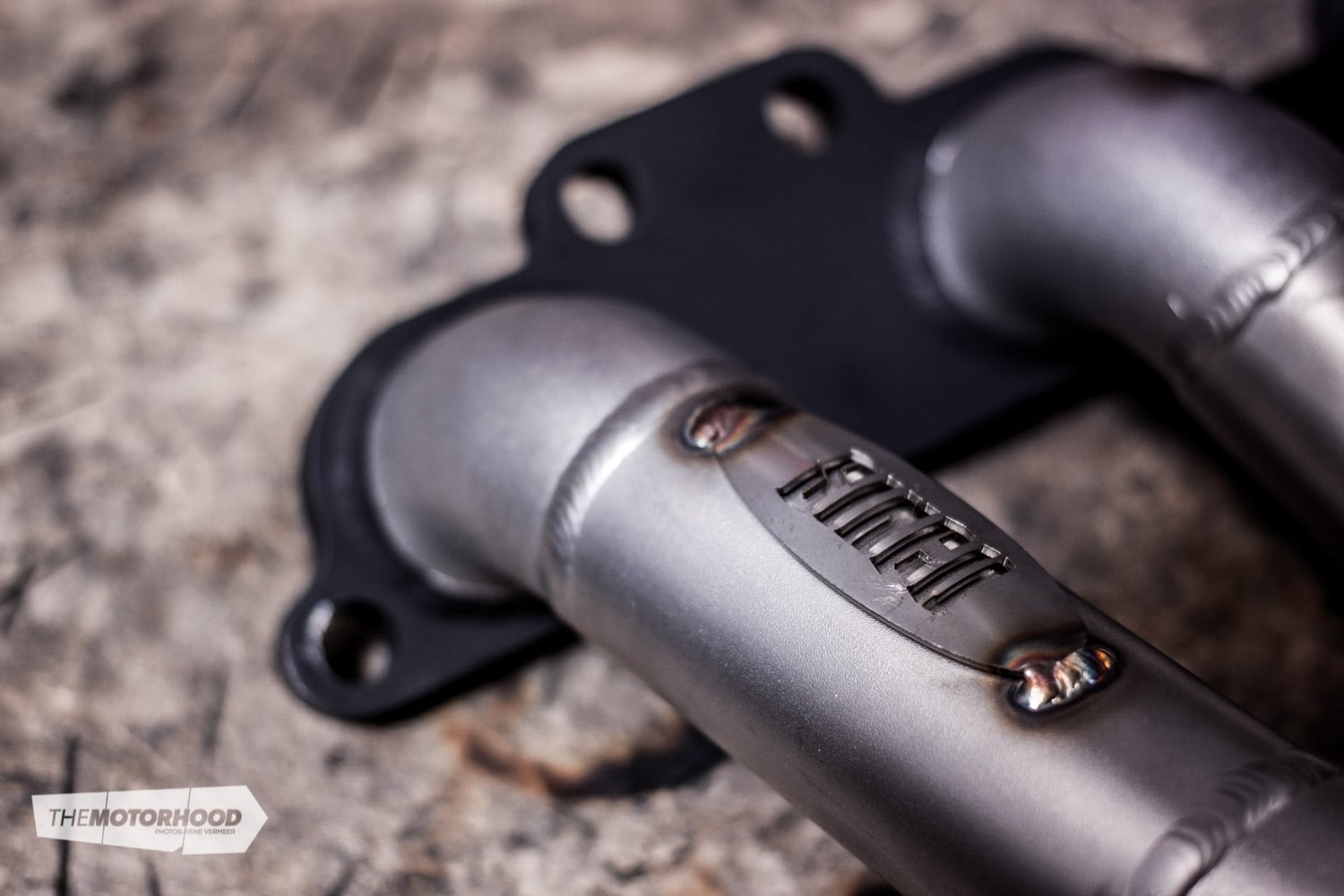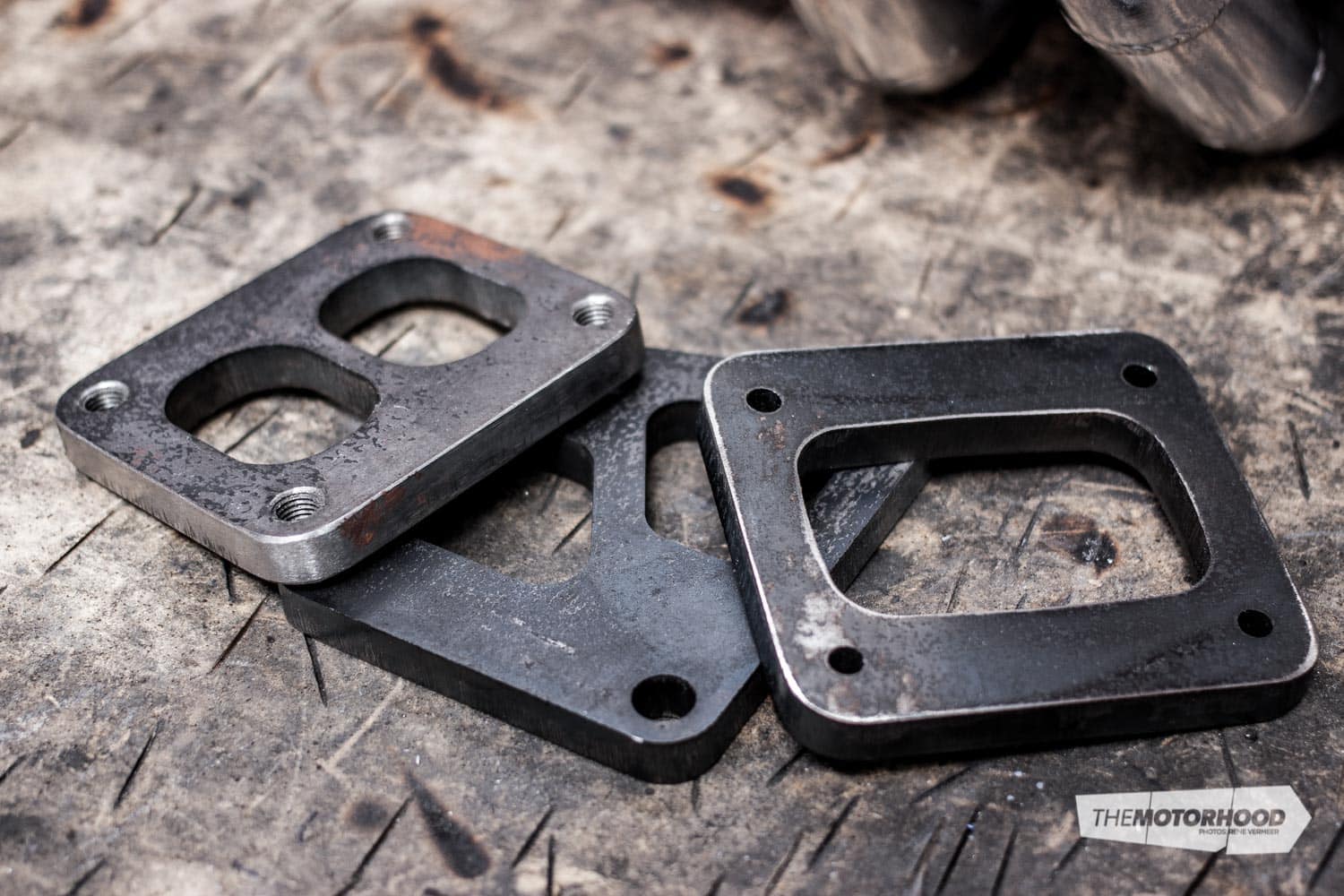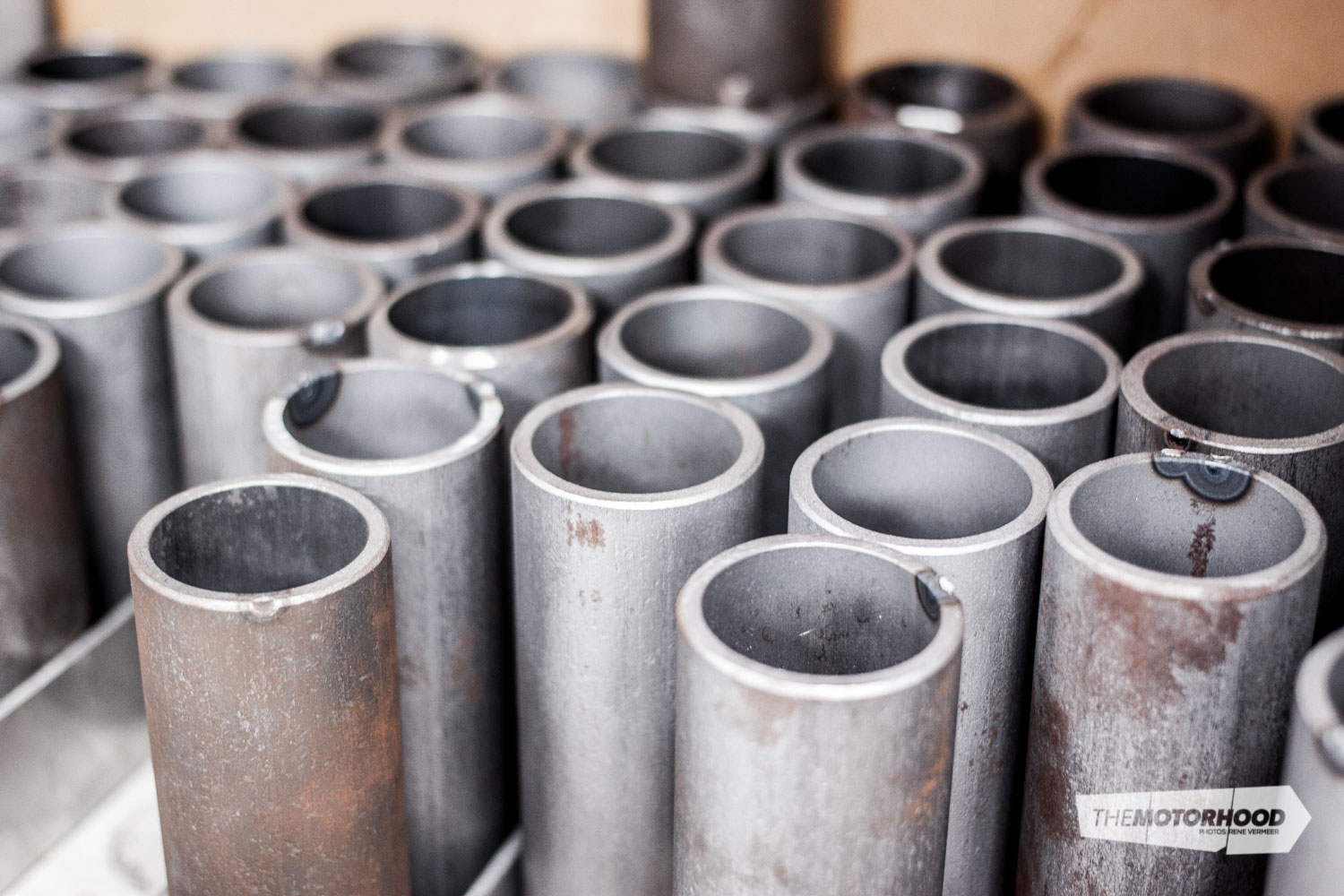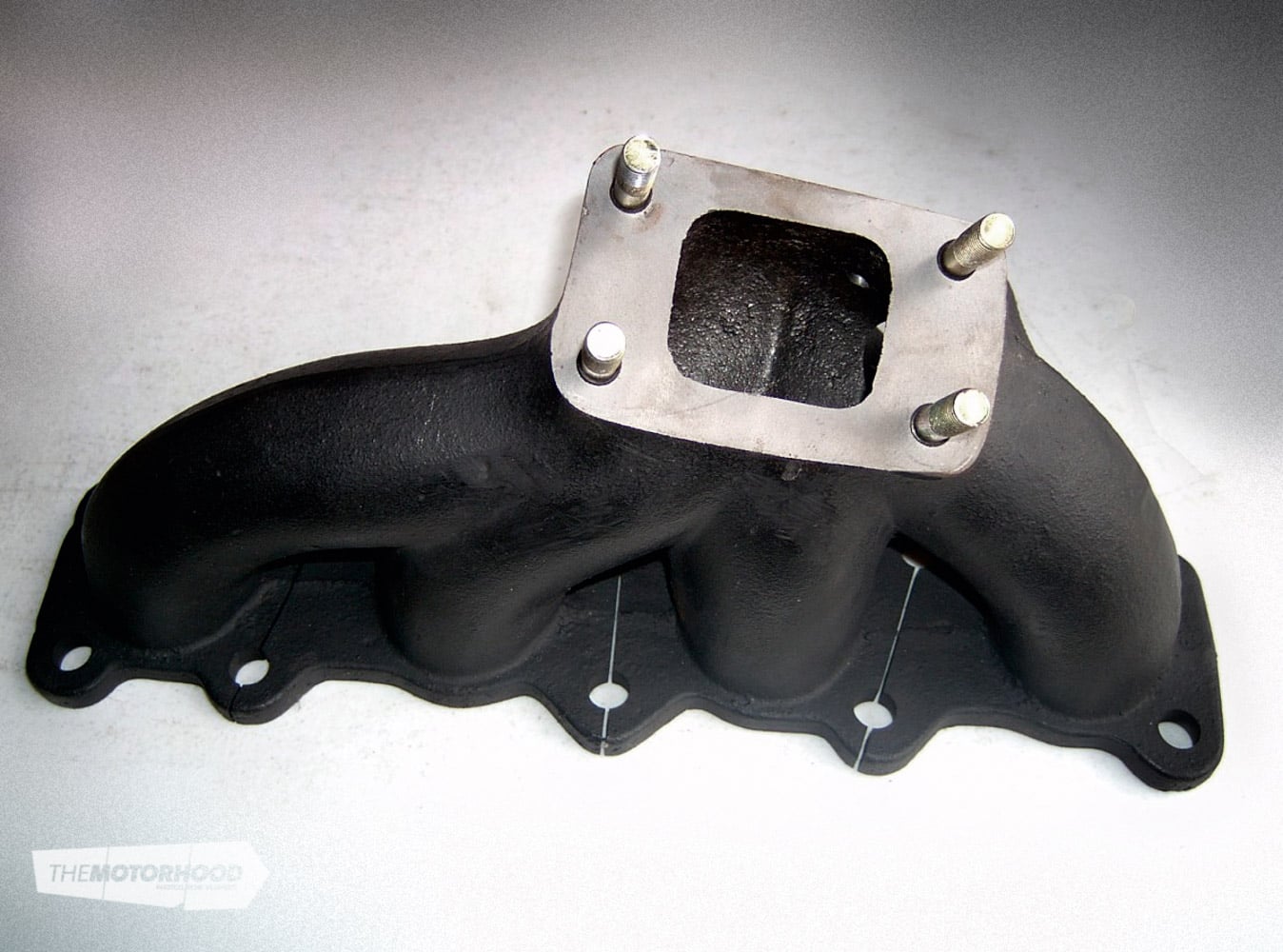Nobody likes being ripped off, or wasting money by purchasing the incorrect parts for their build. So we decided to talk to one of the leaders in manifold fabrication, Mike Sinclair from Sinco Customs, to get the lowdown on selecting the right manifold for your application. We will cover the two most common types of manifolds— the tubular design in both single and twin, or divided scroll, and the log-type manifold.
Turbo manifold basics
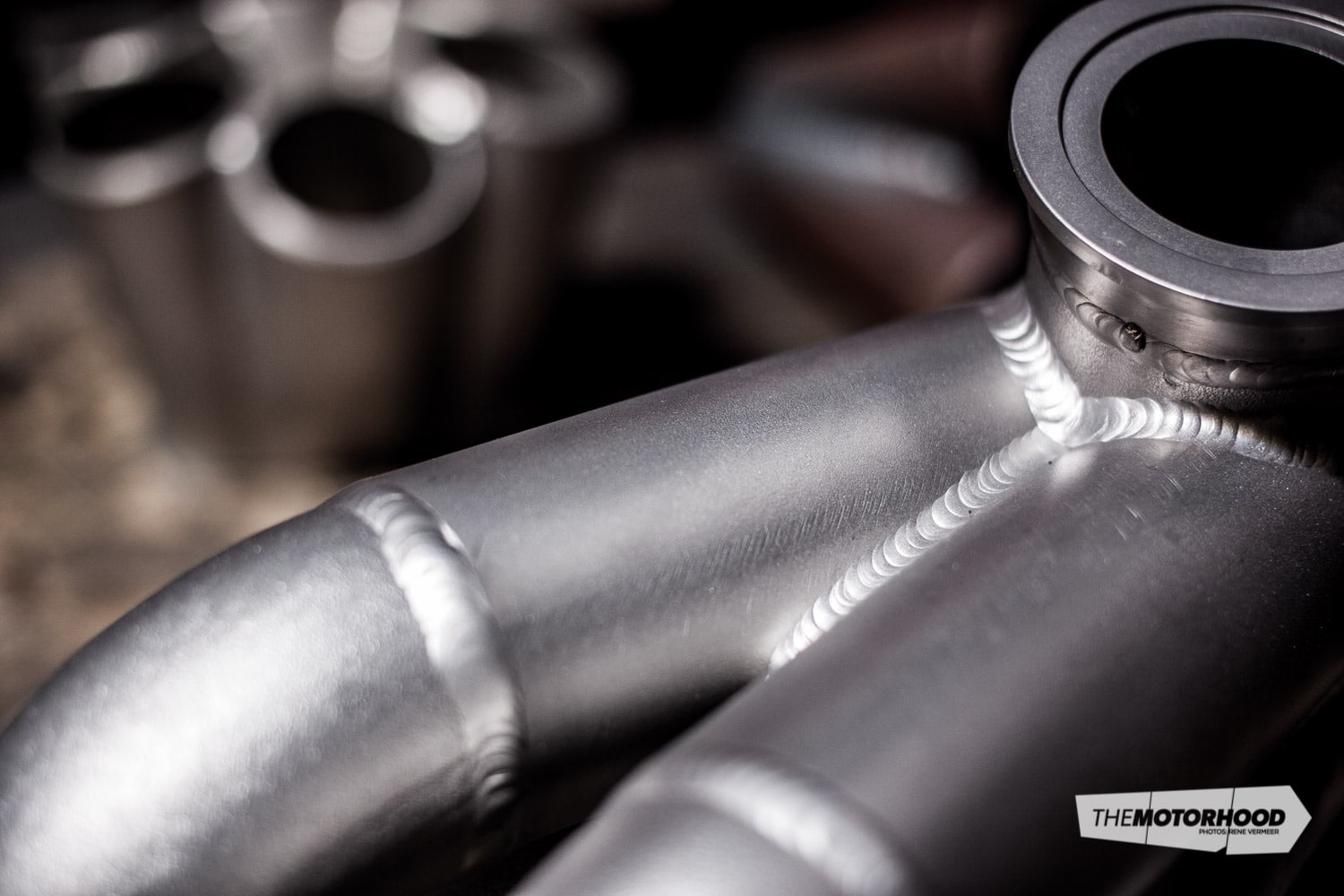
Most of us have a fair idea of what a turbo manifold does, but we’ll mention it again for the newbies who are still learning. A turbo manifold is a series of runners, or pipes, that collect exiting exhaust gases which can then be channelled into a merge collector. A flange is needed to bolt the turbo to the manifold, and this is welded/cast to the merge collector. There are four key components which can make or break an exhaust manifold: runner volume and size, collector angle towards turbo flange, runner length, and wastegate placement.
Tubular manifold
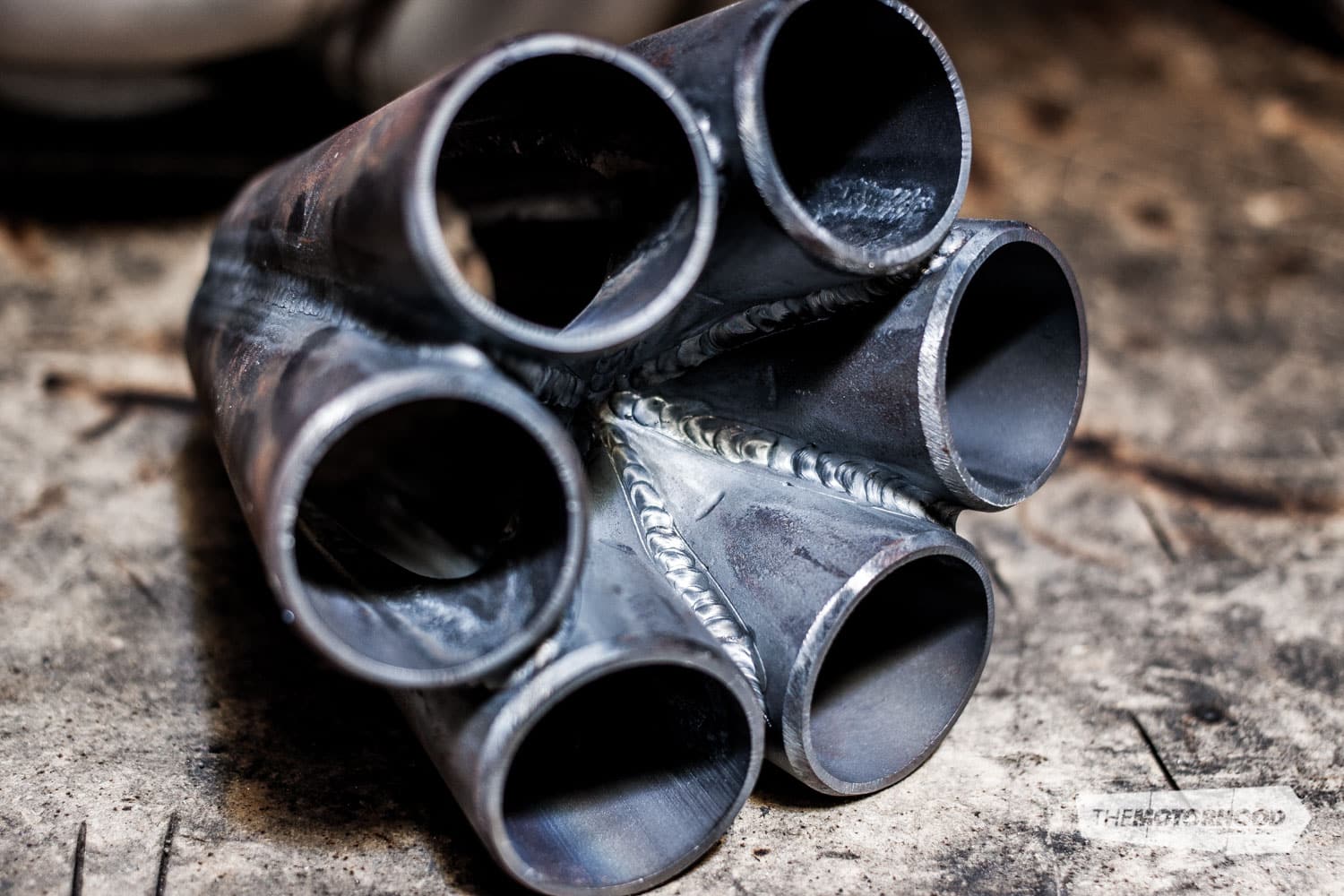
Tubular manifolds are the most common aftermarket manifold type available. Tubular manifolds come in various lengths, sizes and flange types. Equal-length manifolds are great for most applications, and runner lengths can be fabricated to suit your needs, whether it be short for quick boost response with the trade-off being less top end, or long runner for high top end, but less response. Tubular manifolds come in two main designs — twin scroll and single. The single-scroll manifold is the most common of the tubular manifolds. The exiting exhaust gases all merge into one collector, and depart through a single exit flange that the turbo is bolted to.
A twin-scroll design is a completely different beast. The entire manifold could almost be seen as a component part of the twin-scroll turbo set-up it will end up being bolted to. Twin-scroll turbos have a very unique turbine housing design. The housing is divided, which greatly improves turbo response. The manifold design is also unique, it’s built so that the runners are paired at 180 degrees apart from each other in terms of their firing order. They’re designed this way to ensure there is very little interference from another cylinder’s exhaust gases. Twin scroll set-ups offer the best boost response by far, but sacrifice peak power numbers. For example, Mike did back-to-back testing with Carl Ruiterman’s SR20DET-powered drift car a few years ago, and found that boost came on 500rpm earlier, but 20kW of peak power was lost up high in the rev range.
Two external wastegates are needed for this set-up as each pair of runners has to remain separated, and that drives the price up. So if you have a bigger budget and want to extract the absolute most out of your set-up, twin scroll is the best option in terms of boost response, but for most applications a single scroll set-up will make great numbers.
Log manifold

The most affordable manifold by far is the log manifold. Log manifolds are used in factory applications, as they’re a very simple design and can be cast, to keep costs down, but if fabricated they’re simply cheaper because less materials are used. As well as being easy and affordable to manufacture, they are extremely compact compared to a tubular manifold, which is desirable in some applications. However, log manifolds are the worst-performing design in the market, so if you’re after big power, this isn’t the way to go. They don’t factor in different runner lengths, and all the exhaust gases run into a common chamber, so exhaust pulses collide and cause a huge drop in performance.
Short runner length also makes for more heat thanks to the smaller surface area, so heat doesn’t have as much chance to dissipate, and that can cause cracking and damage. Such a restrictive design means these manifolds are only suitable for low pressure and near stock applications.
Turbo manifold tips
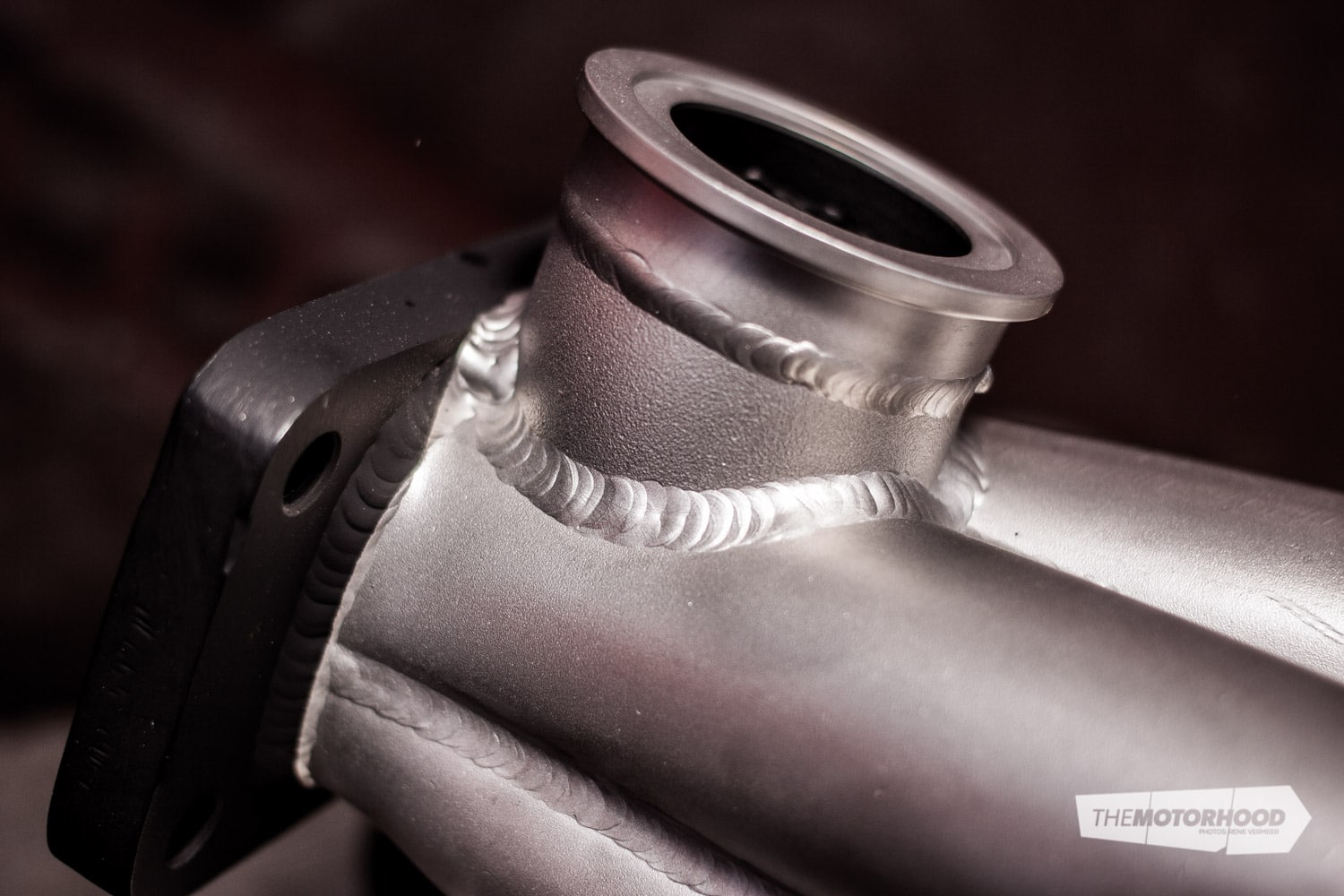
When purchasing an off-the-shelf turbo manifold be sure to buy one that is of good quality. Many of the cheap and low-quality manifolds that have flooded the market are worse than the stock item in terms of reliability and power output, often fooling people with their shiny good looks. If you do buy one of the common, cheap inferior manifolds, ensure you have it checked over by a fabricator before it’s installed. Often the manifold-to-block flanges are warped straight out of the box, which can be a huge hassle, as the manifold studs often get pulled out due to the flex. Another common problem with these manifolds is cracking. Inferior welding quality and wall thickness, the weight of the turbo and wastegate are all enough to make the welds crack under high-heat situations. We’d recommend getting braces welded in-between the turbo flange and the manifold, and the wastegate flange and the manifold, which should ensure your flange welds won’t crack if you do choose to purchase one of these manifolds. We’d also recommend ensuring the downpipe is well supported, and a flexi-joint is used in conjunction with the aforementioned braces.
Another thing to check with these manifolds is the port diameters. Quite often the ports on the manifolds are different to that of the head. A good way to check this is by purchasing a good-quality OEM manifold gasket and comparing the port holes in the gasket to the manifold ports. Do not trust the gasket that is supplied with the manifold, as these are often made of a lower-quality material, and the ports will be the same as the manifold’s ports. Welding ‘dags’ have also been known to break away under high-heat situations, make their way through the manifold and into the turbine housing on the turbo, causing costly damage.
Aesthetics
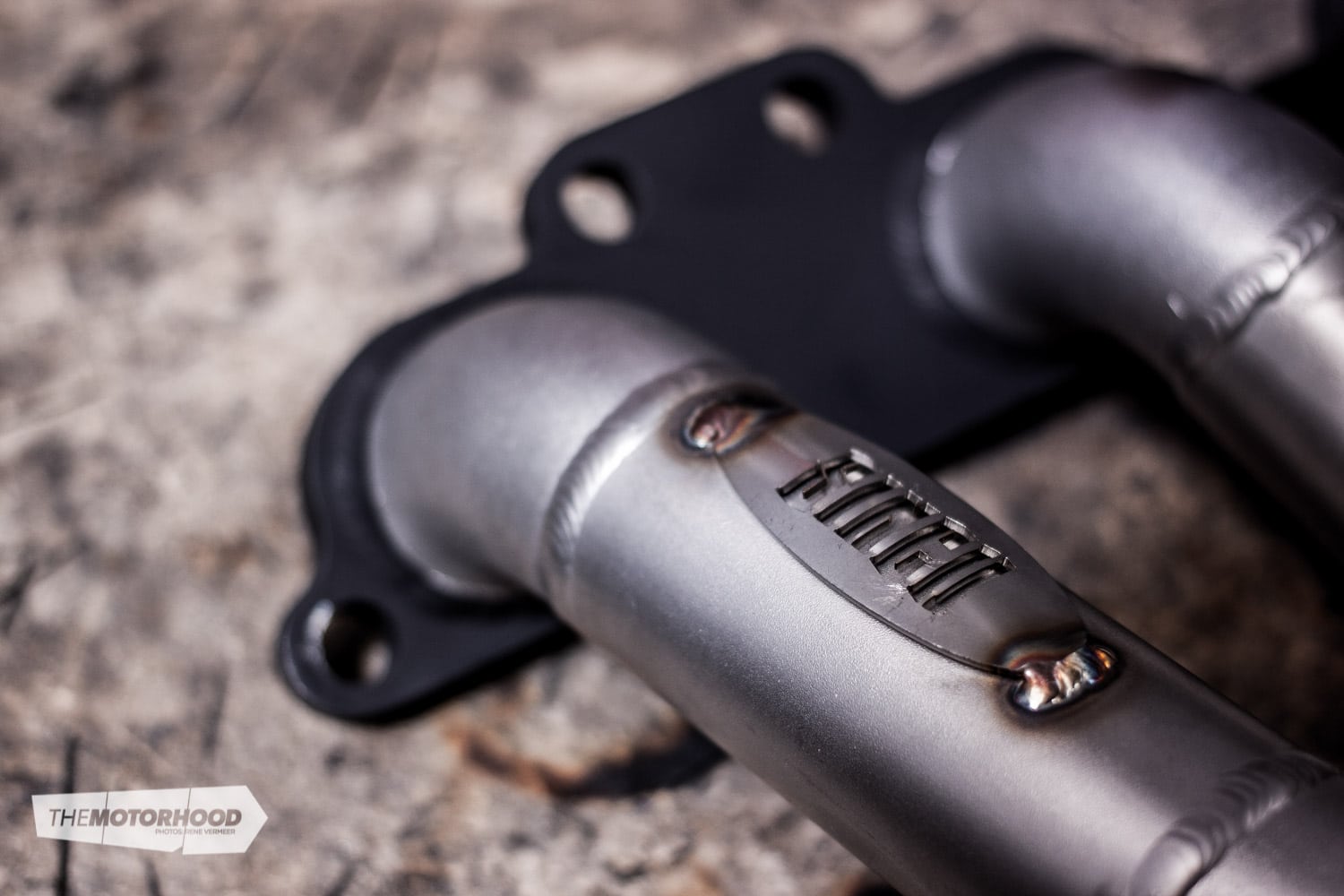
It’s really up to you whether you run a high, low, or a mid-mounted turbo set-up because it all depends what size turbo you are going to run. A standard T25G off a Nissan 180SX would look a tad silly sitting atop a high-mounted manifold, for example. Depending on your goals, fabricators such as Mike can construct something to suit, or more often than not have something available off the shelf. If you are after better response rather than much more power, factory-position replacement manifolds are available at Sinco for most common makes and models — and they’ve proven themselves more times than we could mention.





